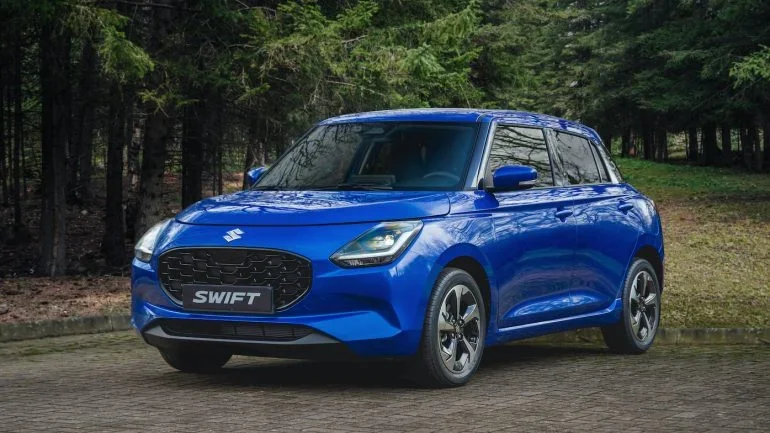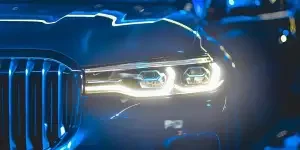The astonishing fuel efficiency of the new Swift proves Suzuki still has a genius for developing built-to-last cars which weigh not a kilo more than they need to

Even after a week of driving it, seeing the average consumption at a little more than 76 miles per gallon amazed me. The new Z12E series 1,197 cc engine has three cylinders and is not turbocharged. For the UK, it comes as standard in 12-volt mild hybrid form, boosted by a belt-driven starter generator. This puts out just 112 Nm (83 lb-ft) of torque and power is a mere 61 kW (82 PS).
Suzuki specifies only five ratios for the manual transmission: more saving of money and mass. Zero to 62 mph takes 12.5 seconds and top speed is only just above 100 mph. Plus, it’s a small line-up and pricing is keen. The non-MHEV version of Z12E, not available in the UK, sells well in Japan and certain other countries. Meanwhile, for the Indian market, Maruti Suzuki also offers an automated five-speed manual gearbox.
Manual-only with 4WD
There are five variants and two trim levels for Britain: Motion manual or CVT (GBP18,699 or 19,949) and Ultra manual/CVT (GBP19,799/21,049) with 4WD reserved for the range-topping Ultra Allgrip (also GBP21,049). There is no auto option if you want all four wheels driven, while 0-62 takes slightly longer at 13.6 seconds.
The Swift lent to me by Suzuki GB was a five-speeder in Ultra grade. For the extra GBP1,100 over a Motion you get electrically-folding mirrors, polished alloy wheels, auto A/C and an air vent for those in the back. If you prefer the CVT, this comes with gear shift paddles as an Ultra. Pricing seems more than fair, particularly when Suzukis in general are far better equipped than they once were.
Officially, the Combined consumption varies between a worst of 51.3 and a best of 74.3 mpg yet somehow the press tester returned 76.1 mpg. How did I do it? Without trying. Most of the several hundred miles were on motorways and some of these had temporary 50 mph sections. You could see how that improved the instant economy read-out. A couple of times I ignored a change-up arrow thinking torque was inadequate yet steadily realised being in fifth instead of fourth was fine.
Is 80 mpg possible?
Could an owner even see 80 miles per gallon? Keeping the A/C off, windows up and your right foot lightly pressed I see no reason why that shouldn’t be the result. Which is astonishing, even when you know the base version tips the scales at only 949 kilos.
Push the car hard and the average will still be 50-plus. Equally impressive. Aerodynamic drag is one of those factors which many people overlook yet the Swift must clearly be a relative streamliner compared to the old-shape car, itself hardly a gas-guzzler. The new engine, which loses a cylinder compared to the previous MHEV powertrain, warms up rapidly I noticed, and shuts itself off as much as possible. Kinetic energy recovery also seems to be especially good with the latest car.
Mass reduction as an engineering priority
Lest anyone think the Swift is all about buying petrol only occasionally, that is just one part of the appeal. Everything feels light though the steering does have a decent weight to it, as do the doors which are not of the clanging variety. Suzuki specifies fairly thin carpets, hard plastics and synthetic upholstery but so what?
Sitting in the driver’s seat you immediately think of Japanese cars from the 1980s and 1990s and how faultless and long-lasting they were. Controls are simple, well-designed and within reach. Even the touchscreen is straightforward and free from fuss, there is a handbrake, and wonderfully clear circular instruments with pointer needles. Want to activate either of the front seat heaters, adjust the air conditioning’s fan speed or deactivate lane-keeping assist? Simple: press a plastic button.
Made in Japan for European countries
With no presence in China or the US and the brand being a fairly small one in Europe, maybe the Swift isn’t that big a deal? That mistake might be easy to make were it not for India where the model debuted a few months back. It is manufactured there at the same Hansalpur plant in Gujarat which produced the prior generation. Cars for right- and left-hand drive European markets are instead sourced from Japan (Sagara factory).
Suzuki remains the number two brand in Japan and while its Kei models are much of the reason why, the Swift does decent volume there. The little hatchback also sells well throughout Asia and even has a strong following in Mexico. A true global model then even if India is far and away the number one market. It was that country’s best seller in 2023 and the new model is off to a good start too, with registrations for H1 reaching 81,172 units (old and new shapes combined).
Now bigger than Mazda Europe-wide
How about the UK and the greater European region? The brand is doing really well lately with sales up by eleven per cent year-on-year in Britain to 13,588 units for 1 January to 30 June.
Across all of Europe, including the UK as well as EFTA markets, the equivalent registrations tally was 115,210 cars and SUVs. As well as that being an annual rise of 28 per cent, market share reached 1.6 per cent compared to 1.3 for the first half of 2023.
Smaller than traditional B cars
The platform of the new car is an update of Suzuki’s well known Heartect architecture, while the model itself is 15 mm longer than the previous Swift (now 3,860 mm) but 40 mm narrower and 30 mm taller. The 2,450 mm wheelbase did not change. That length also places the little car between segments, even if the UK importer understandably compares it to B segment models – the five-door A segment Aygo, Panda, i10 and Picanto are all shorter.
They may not want to be there for hours and hours but three people can sit comfortably in the back of this Suzuki. Nor will their knees or head be squished as the front seat-backs are soft and headroom is really very good. Considering how squat the rear of the Swift is, the boot isn’t too squeezy, capacity being a decent 265 litres, expandable to 589. More than enough for typical B segment car buyers.
How does it drive?
Handling and roadholding are terrific, another bonus of low weight. Most Suzukis are quite fun to drive for the same reason, yet due to a little more work on NVH compared to the old Swift, a manufacturer’s claim that it is quieter seems true. Yes it leans a fair bit but that only adds to the enjoyment. Moreover, while the steering never matches the level of the much-missed Fiesta’s, it does indeed have a nicely precise feel.
Summary
This little hatchback offers terrific value, the reassurance of an acclaimed dealer network and that other thing which certain of the big OEMs keep getting wrong. Namely a long-term view and partnership with suppliers and those who make the cars. Why have an adversarial one? That almost guarantees patchy quality and constant recalls. Plus quarterly financial returns which tend to wildly fluctuate.
As the Swift shows, Suzuki looks as though it will continue to get most things right. The company’s first EV (code: YY8) will be revealed within the next six months, initially for India. This 4.3 m long SUV, based on the eVX concept, should show some innovative thinking in key ways (i.e. likely lighter than existing vehicles in the segment). Will it have as much charm as the Swift though?
Source from Just Auto
Disclaimer: The information set forth above is provided by just-auto.com independently of Alibaba.com. Alibaba.com makes no representation and warranties as to the quality and reliability of the seller and products. Alibaba.com expressly disclaims any liability for breaches pertaining to the copyright of content.



